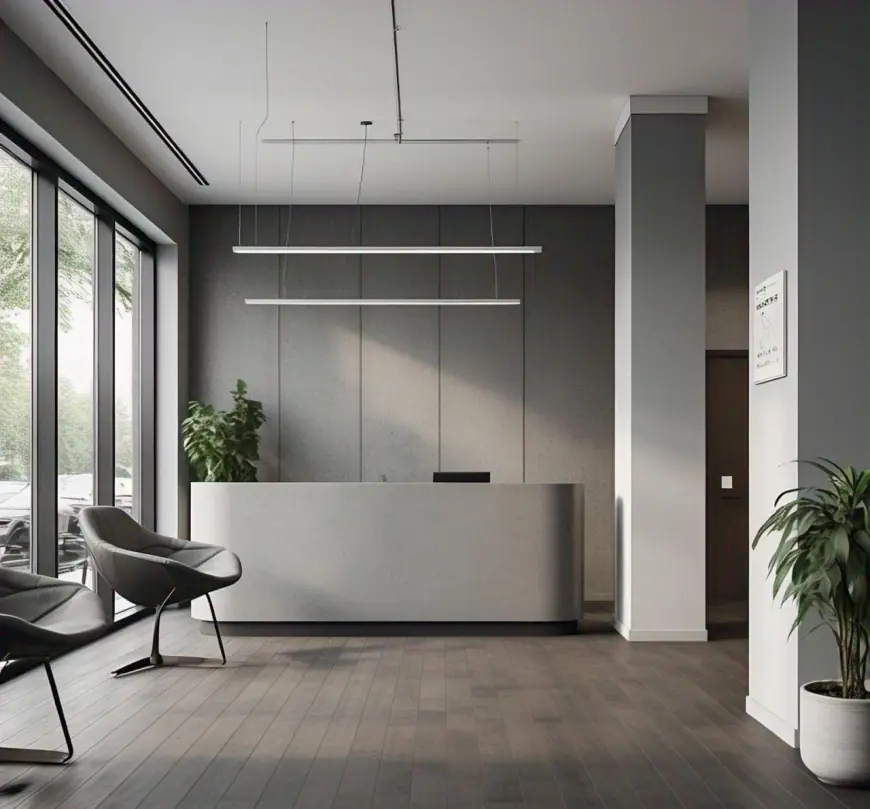Commercial Interior Design: Crafting Spaces for Success

Introduction
In today's business world, commercial interior design plays a crucial role in shaping brand identity, enhancing customer experiences, and fostering employee productivity. Whether it's a bustling retail store, a sleek corporate office, or a cozy café, the interior design of a commercial space has a profound impact on how people interact with and perceive a business. This article explores the key principles of commercial interior design, the latest trends, and how businesses can benefit from well-designed spaces.
What is Commercial Interior Design?
Commercial interior design focuses on designing functional and aesthetically appealing spaces for businesses, organizations, and public areas. Unlike residential design, which caters to personal preferences and comfort, commercial design must consider a broader audience, brand identity, and business objectives. Some of the most common types of commercial interior design include:
-
Retail Spaces – Stores, boutiques, and malls designed to optimize product displays and customer flow.
-
Corporate Offices – Workspaces that promote productivity, collaboration, and brand culture.
-
Hospitality Venues – Hotels, restaurants, and cafes that create memorable guest experiences.
-
Healthcare Facilities – Clinics and hospitals that balance functionality with comfort for patients.
-
Educational Institutions – Schools and universities designed for an engaging learning environment.
Key Principles of Commercial Interior Design
1. Functionality & Space Planning
The primary goal of commercial interior design is to create spaces that are practical and efficient. Effective space planning ensures smooth workflow, accessibility, and optimal use of available space. For example, in an office setting, open layouts with collaborative zones can enhance teamwork, while private meeting rooms provide focused work areas.
2. Aesthetic Appeal & Branding
A well-designed commercial space should reflect a company's brand identity and values. Colors, materials, and furniture should align with the brand’s personality. A tech startup may opt for a modern, minimalist design with vibrant colors, while a luxury brand may choose opulent materials and sophisticated lighting.
3. Comfort & Ergonomics
Comfort is essential for both employees and customers. Ergonomic furniture, appropriate lighting, and acoustics all contribute to a positive environment. In workplaces, ergonomic chairs and adjustable desks improve employee well-being and productivity.
4. Sustainability & Eco-Friendly Design
Sustainable design is gaining importance in commercial spaces. Businesses are integrating eco-friendly materials, energy-efficient lighting, and green building certifications (like LEED) to reduce environmental impact and improve energy efficiency.
5. Technology Integration
Modern commercial spaces incorporate smart technology for enhanced user experiences. Offices use automated lighting and climate control systems, while retail stores use interactive displays and digital payment solutions to streamline operations.
Trends in Commercial Interior Design
1. Biophilic Design
Biophilic design integrates natural elements like greenery, natural lighting, and organic materials to create a calming and refreshing environment. Many offices and hospitality spaces incorporate indoor plants, water features, and large windows to enhance employee and customer well-being.
2. Open & Flexible Workspaces
The demand for adaptable spaces is rising, especially in corporate environments. Open floor plans, modular furniture, and co-working spaces allow businesses to reconfigure layouts based on changing needs.
3. Industrial Aesthetic
Exposed brick walls, raw materials, and metal fixtures give a space a modern yet rugged charm. Industrial design is popular in restaurants, cafes, and urban office spaces.
4. Sustainable Materials
Eco-friendly materials such as recycled wood, bamboo, and energy-efficient lighting are being widely adopted. Businesses are also opting for locally sourced materials to reduce their carbon footprint.
5. Smart Office Solutions
Technology is revolutionizing commercial design with features like IoT-enabled workspaces, automated lighting, and virtual collaboration tools, making workplaces more efficient and connected.
Benefits of Well-Designed Commercial Spaces
1. Enhances Employee Productivity & Satisfaction
A well-designed office fosters a positive work environment, reducing stress and boosting productivity. Comfortable seating, good lighting, and breakout areas contribute to employee well-being.
2. Strengthens Brand Identity
The interior design of a commercial space is an extension of a brand’s image. A thoughtfully designed store or office leaves a lasting impression on clients and customers.
3. Improves Customer Experience
For retail and hospitality businesses, the right design can influence customer behavior and satisfaction. Engaging store layouts and aesthetically pleasing interiors encourage longer visits and increased sales.
4. Optimizes Space Utilization
Smart design ensures efficient use of space, reducing clutter and improving workflow. Multi-functional furniture and storage solutions help maximize limited areas.
5. Sustainability & Cost Savings
Eco-friendly design choices not only reduce environmental impact but also lower operational costs. Energy-efficient lighting and insulation save on utility bills in the long run.
Conclusion
Commercial interior design is more than just aesthetics—it’s a strategic tool that enhances brand image, improves functionality, and influences customer and employee experiences. As businesses continue to evolve, so do design trends that focus on sustainability, flexibility, and technology. Whether designing an office, retail store, or hospitality space, investing in professional interior design can make a significant impact on business success.












